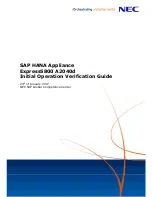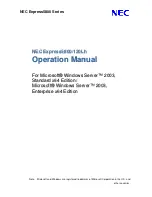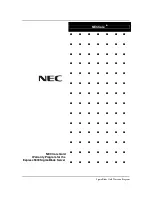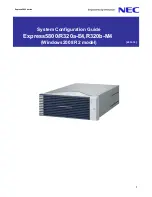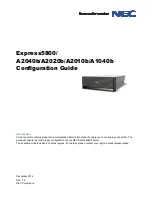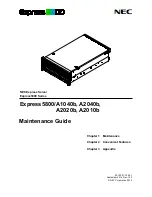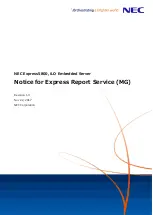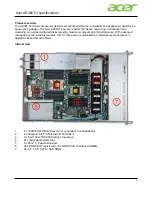
6
Glossary
password
A security feature that prevents an unauthorized user from
operating your computer. See also EEPROM.
PCI
Peripheral Component Interconnect. PCI is a high-performance
peripherals I/O bus supporting data transfers of up to 132MB per
second.
Pentium
A type of microprocessor, with a built-in math coprocessor, cache
memory, and memory and bus controllers, that processes and
communicates 32 bits of data at a time. This microprocessor also
contains power management capabilities.
peripheral
A device connected to and controlled by the computer, such as an
external disk drive or a printer.
pixel
The smallest element that is visible on a video display. The
resolution of a video display system is measured in pixels.
POST
Power-On-Self-Test.
R
RAM
(Random-Access Memory) A temporary storage area for data and
programs. This type of memory must be periodically refreshed to
maintain valid data, and is lost when the computer is powered
off. See also NVRAM and SRAM.
real-time clock
The IC in your computer that maintains the time and date.
ROM
(Read-Only Memory) A type of memory device that usually is
used to store system BIOS code. This code cannot be altered and
is not lost when the computer is powered off. See also BIOS,
EPROM, and flash EPROM.
RS-232C port
An industry standard serial port. See also serial port.
S
save
To store information on a floppy disk, hard disk, magnetic tape,
or some other permanent storage device.
SCU
(System Configuration Utility) The program that you use to
change the configuration of your system. This program also
contains information about the hardware in your system.
SCSI
(Small Computer System Interface) An industry standard
interface that provides high-speed access to tape drives, hard
disk drives, and other peripheral devices.
serial
communication
Information sent sequentially, one bit at a time.
Summary of Contents for HX4000
Page 1: ... Server HX4000 U s e r s G u i d e ...
Page 6: ...raham ...
Page 8: ...Bill Graham ...
Page 9: ...Chapter 1 Introduction Contents Organization 1 Notational Conventions 3 ...
Page 10: ...Bill Graham ...
Page 14: ...1 4 Introduction ...
Page 16: ...x ...
Page 44: ...2 28 Features ...
Page 46: ...x ...
Page 53: ...3 7 Setup ...
Page 55: ...1231231 Billy Graham ...
Page 82: ...4 27 Configuring Your System Figure 4 3 System Board Jumpers ...
Page 146: ...5 57 Upgrades and Options Figure 5 28 Removing the Rear Fan modules ...
Page 148: ...dfgdfg ...
Page 176: ...6 28 Problem Solving ...
Page 178: ...Bill GrahamBill Graham ...
Page 184: ...A 6 System Cabling ...
Page 185: ...Appendix B Memory Configurations Contents Memory DIMM Configurations 1 ...
Page 186: ...Bill Grahamaerrterterter ...
Page 190: ...B 4 Memory Configurations x ...
Page 191: ...Appendix C Option Boards Contents Introduction C 1 ...
Page 193: ...Appendix D Devices Contents Introduction 1 ...
Page 195: ...Appendix E Network Operating Systems Contents Introduction 1 ...
Page 198: ...rtyrtyrtyrtyry ...
Page 208: ...8 Glossary ...
Page 209: ......
Page 210: ... 904167 ...




















